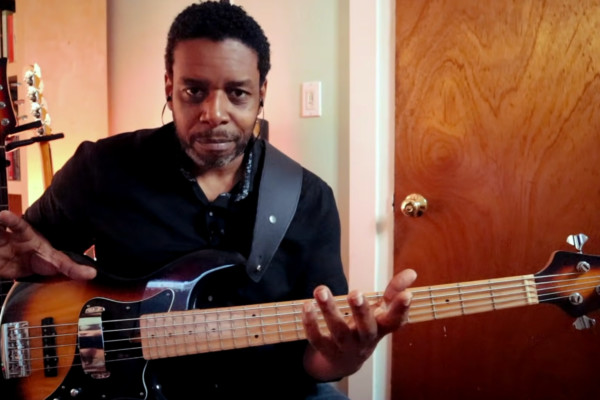Transcribing and Incorporating Bass Lines and Licks
Q: When I practice, I spend a lot of time transcribing different bass lines. After I’ve transcribed and learned to play it, I try to incorporate it by jamming along the record, using some of the cool ideas from original bass lines. Do you have some ideas and concepts for incorporating transcribed bass lines in your playing?
A: I think you’ve touched on something here. I always tell my students that figuring out what someone played and putting it to paper is only the first half of the exercise. The real meaty part is analyzing what that person played, and trying to see the instrument or lines through the performers eyes and ears.
I think it’s important to figure out the context of the line and really try to figure out the player’s thought process. Examples:
- What chord is the lick or line played over?
- Is it being used to transition to another section?
- Is it referencing the melody?
- Can it work over other chord types?
- If it’s a major chord lick, for example, how does it sound when played from the relative Major over a minor chord vamp?
This is especially true, for me anyway, when it comes to figuring out a players licks and other melodic content that makes that player sound like them. If you can write it out and analyze why they played what they did, you have a much better understanding of the line and will be much more effective at making use of the lick or, better yet, evolving it into something completely and uniquely your own.
I’ve actually alway been pretty bad at copping licks from players. It’s not for lack of trying, but I have never been able to really make much of anything sound like anything but my own. I typically look at a lick or line in the context of the harmony it’s functioning over and then just play with that concept until something clicks for my and my style of playing. This is a pretty beneficial way for me, personally, as it helps me to come up with material or melodic concepts that are fairly unique to me (or at least approached in a different way).
I will take any simple concept and really try and think, “How have I not yet looked at this thing?” “What haven’t I thought of to do with it?”
Applying this kind of thinking is useful in a general way, but is also a great way to help turn that lick you’ve figured out that Pino or Victor played and turn it on it’s head and make it your own.
Here are a few examples of things I might try:
If it’s a major lick, try it from every relative Major chord relating to the tonality your playing.
Example: if you’re in C Major and want to employ that lick:
- Try it in C Major
- Try it in F Major (Lydian)
- Try it in G Major (Mixolydian)
If it’s a minor related lick, try it from the relative ii-, iii-. vi-, vii-
- Try altering a note to make it appropriate over a different chord type.
- Try moving the shape of the lick up the scale diatonically (changing notes accordingly to fit over the appropriate chord type). A la: C Major modes:
C?7 | D-7 | E-7 | F?7#11 | G7 | A-7 | Bø7 - Try it ascending and/or descending
- Try splitting the lick in half and change register (put the 2nd half an octave up? or down?)
You get the idea. Really explore one single concept at a time, and you very well may open a treasure trove of ideas. If nothing else, you’ll know you’re fretboard better.
Have a question for Damian Erskine? Send it to [email protected]. Check out Damian’s instructional books, Right Hand Drive and The Improviser’s Path.



